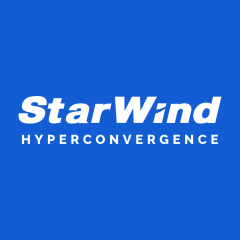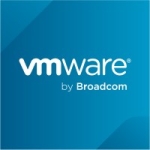What is our primary use case?
I was hoping to implement a High Availability and redundant system without sacrificing performance or my budget. Looking at various HCI and vSAN solutions, the cost was a bit prohibitive.
I really wanted my cake and to eat it to; however, VMware's vSAN offering and looking at a few HCI solutions (vXRails, Nutanix, etc.) just did not fit my budget. That is when I read a review on StarWind free vSAN, which got me interested, but I knew I wanted (and needed) support.
We set up a three-node cluster on new, identical servers with VMware's vSphere and added StarWind's vSAN product to expand our capabilities.
Our servers started out with 8 HDDs, and after production, we added 4 SSDs which StarWind assisted in getting online in the vSAN.
How has it helped my organization?
We have High Availability, failover, redundancy, and the ability to move workloads on the fly with no impact on the organization. It is great for patching and updates to the servers.
The ROI is great on this product. We did have to upgrade our licensing to enterprise level as we surpassed the 8TB limit by adding additional storage. Purchasing a three-year term helped bolster our ROI even further.
We did have a vCenter failure during an upgrade. StarWind support was able to get the systems back online and syncing with no data loss or impact on production (and even improve the installation by moving the critical StarWind components on the Boss Card).
I feel very confident in the support team's abilities.
What is most valuable?
First and foremost, StarWind has awesome support. You work with the same engineer throughout implementation or any issues.
They explain the process of what and why they are doing whatever it is. You are not left high and dry when looking to implement the vSAN and can solve issues that may arise or even configure additional added storage.
The stability is great. The solution has been running with no issues due to vSAN itself. It is one of those "set it and forget it" types of systems. Perhaps this is a bad thing as you kind of do not think about it.
What needs improvement?
The documentation is good yet is still lacking in a few areas. I would love to see more comprehensive walk-throughs or perhaps even videos. With this being such a critical piece of infrastructure, I do not like to take chances. Fortunately, support will be there to help hold your hand or even perform the process for you, ensuring everything is working.
It would be really nice to have a documented "Best Practices" list to ensure you are doing everything you can to ensure stability and performance. I have to be a bit nitpicky; overall, there is not much I can really add.
For how long have I used the solution?
We demoed the product in early 2021. We have been using it in production for over a year now.
What do I think about the stability of the solution?
It is extremely stable thus far. We've been running well over a year without any issues due to StarWind itself.
What do I think about the scalability of the solution?
It offers great performance and has the ability to add additional nodes to your cluster.
How are customer service and support?
I would say StarWind has the best customer service and support. They are quick and aggressive in resolving any issues as quickly as possible. Not enough good things can be said about how they treat customers.
How would you rate customer service and support?
Which solution did I use previously and why did I switch?
We used an MS 2008r2 Cluster many years ago. Prior to StarWind vSAN, were using static servers.
How was the initial setup?
For a three-node cluster, the setup seemed complex. However, upon purchasing a license, StarWind's excellent support took over and created a PoC install for us.
What about the implementation team?
We worked with the vendor team. They were great to work with. Over multiple days, you work with the same engineer, which is a great way to work versus getting transferred from tech to tech.
What's my experience with pricing, setup cost, and licensing?
While you can add nodes later on, I would suggest really putting thought into how many nodes you want to start with, as networking can get challenging if you omit a good 10+GB switch.
Which other solutions did I evaluate?
I looked at a few HCI (Dell, vxRail, and Nutanix) and the VMware vSAN solution. It was cost-prohibitive for me
What other advice do I have?
I cannot say enough good things about the support this company gives; more companies need to model this.
Which deployment model are you using for this solution?
On-premises
Disclosure: My company does not have a business relationship with this vendor other than being a customer.
















